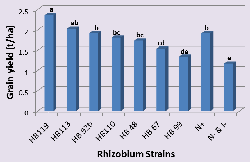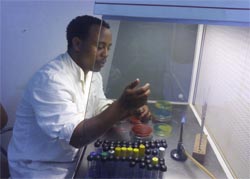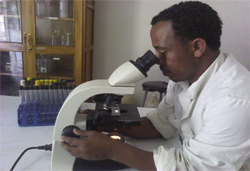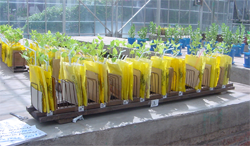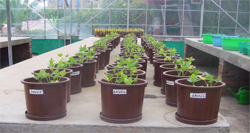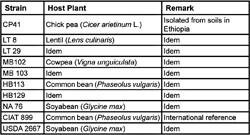|
Hawassa University (HwU) has been conducting research on rhizobium-legume symbiosis for more than a decade in collaboration with researchers in universities in the Northern Hemisphere (Norway, Finland, Germany, Canada). Along this path, we have genetically and symbiotically characterized hundreds of rhizobial strains isolated from soils in Ethiopia, identified several new genospecies and named the unique ones (International Journal of Systematic and Evolutionary Microbiology (2013) 63, 1746-1753, and google "rhizobia and southern and Ethiopia" for more information). These findings have demonstrated that Ethiopia represent a hot spot, not only for cultivated crops, but also for rhizobial biodiversity in the East Africa region.The detection of such high diversity in our collection (> 500 strains) while contributing to global knowledge on the biodiversity of rhizobia, also represent a valuable biological resource to enhance legume-rhizobium symbiosis and N2 fixation in farming systems. Results from cross-inoculation experiments involving only few of these strains and target hosts (Haricot bean, soyabean, chickpea, cowpea, lentils etc.) demonstrated ample opportunity for identifying elite strains (Pictures 1 & 2, 3, 4). Appropriate handling, preparation and application of these strains as legume seed inoculants improve crop yield, soil fertility and nutritional quality (protein content) of the legume crops (grain as well as straw) (Fig. 1). Higher protein content in straw ensures good quality animal feed and/or efficient C and N transformation and delivery, thus impacting the yield of non-legume crops in rotation. N2Africa, in partnership with NARS, Universities, ATA, MoA and community based facilitators (the DAs), is actively working towards effective utilization of these valuable resources. Some strains, which have been tested and proved to be effective on specific legumes, are available to NARS for use as inoculants (Table 1). Also, standard strains from international collections in our biobank has been supplied as reference.
On behalf of HwU and participating researchers, I would like to acknowledge the scientific contributions of co-investigators at various universities abroad, particularly of the Norwegian University of Life Sciences (UMB), the Norwegian Universities Committee for Research and Education(NUFU) for funding, large number of PhD and MSc students and the research team in Hawassa University and at UMB. A special thanks goes to Prof. Åsa Frostegård of UMB for her guidance, efficient coordination of the NUFU-HwU collaborative project, and the overall support she has provided in this process. Endalkachew Wolde-Meskel, N2Africa Coordinator, Ethiopia |
Picture 1. Solomon (a technician) working on pure rhizobial strains in the laminar flow chamber in the soil microbiology laboratory at HwU
Picture 2. Investigating purity and Gram staining under microscope
Picture 3. Authentication of rhizobial isolates on homologous host (Phaseolus vulgaris)
Picture 4. Effectiveness test of rhizobial strains (Phaseolus vulgaris) under greenhouse Table 1. List of strains effective to specific legume host species
|

